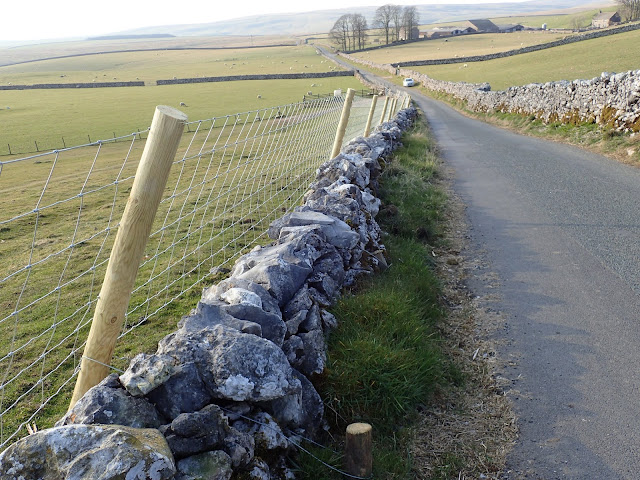"Will you write an article for Langcliffe digital Newsletter on "Wildflowers of Langcliffe on May 2nd?" asked Cindy, the editor
"And produce an annotated map of Langcliffe so that people can go for walks and give names to the plants they see?"
"Yes!"
I have lots of entries for the southwest half near the village. But the upland half of the parish is thin on records.
So on the evening of 19 April I drive up to Henside - the top (eastern) boundary where the road actually is the parish boundary. Although I have driven along this road maybe hundreds of times I have not noticed any wildflowers here. Walking along it in the pleasant evening sun, the only plant in flower is the woodland plant Dog's Mercury - growing at the wall side. - No trees around at all. Some brand new posts and new netting to supplement the wall. A sign saying "no through road to Langcliffe because of road works"
 |
| Male Dog's Mercury |
 |
| Brand New Fencing |
 |
| Jelly Ear fungus |
 |
| One tree - sycamore has Parmelina pastillifera |
 |
| Old Limestone Wall made from shallowly bedded limestone |
 |
| In the last field before the top road at Henside, where I had left my car there is a spring. it has watercress not yet in flower. |
"Tomorrow" I decide, "Tomorrow, I will go and checkout the Hare's-tail Cotton-grass I saw 21 years ago on the eastern boundary. when I made a botanical survey of Langcliffe Parish for the Millennium. It is in a high up area about 1/2 a mile from Victoria Cave. Langcliffe parish is underlain almost entirely by limestone. full of joints, so streams and wet areas are rare. Peaty areas are needed for Hair's-tail Cotton-grass.






No comments:
Post a Comment